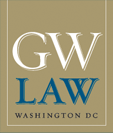Document Type
Article
Publication Date
2010
Status
Accepted
Abstract
The ongoing financial crisis has revealed fundamental weaknesses in the regulatory systems of the United States, the United Kingdom and other European nations. In particular, publicly-funded bailouts of major banks have confirmed that “too big to fail” (TBTF) subsidies distort economic incentives and encourage excessive risk-taking by large, complex financial institutions (LCFIs). Accordingly, the primary goals of regulatory reform must be (i) to eliminate, or at least greatly reduce, TBTF subsidies and (ii) to force LCFIs to internalize the risks and costs of their activities.
After surveying the causes and consequences of the financial crisis, this article proposes five regulatory reforms that are designed to shrink TBTF subsidies in the U.S. First, existing “size caps” on large banks should be strengthened. Second, LCFIs whose failure would pose a systemic threat to the stability of the financial system should be publicly designated as systemically important financial institutions (SIFIs). A special resolution regime administered by the Federal Deposit Insurance Corporation should be created to handle failures of SIFIs. This resolution regime should follow the essential principles of a Chapter 11 bankruptcy proceeding, including (i) wiping out the investments of shareholders, (ii) dismissing senior executives and directors, and (iii) requiring creditors to accept “haircuts” in the form of less-than-full payment of their claims or conversion of their claims into equity interests in a successor institution. Third, SIFIs should be subject to consolidated supervision by the Federal Reserve Board and to enhanced capital requirements. Fourth, SIFIs should be required to pay insurance premiums to establish a systemic risk insurance fund (SRIF) to cover the future costs of resolving failed SIFIs. The SRIF should be kept strictly separate from the existing Deposit Insurance Fund (DIF). To prevent the DIF from being used to support future bailouts of TBTF institutions, Congress should prohibit the DIF from making any payments to uninsured creditors of banking organizations. Fifth, to ensure that SIFIs cannot use the federal safety net to subsidize speculative activities in the capital markets, a two-tiered system of banking regulation and deposit insurance should be established. The first tier of “traditional” banking organizations could provide services that are “closely related” to banking. However, those entities would not be allowed to engage, or affiliate with firms engaged, in securities underwriting or dealing, insurance underwriting or derivatives dealing. First-tier banks would operate under their current supervisory arrangements, including their existing deposit insurance.
In contrast, the second tier of “nontraditional” banking organizations would be allowed to engage in capital markets activities, but they would be required to conduct those activities solely in nonbank holding company subsidiaries. Second-tier banking organizations would also be required to operate their banking subsidiaries as “narrow banks.” Narrow banks could not accept uninsured deposits and could not make any loans or other transfers of funds to their affiliates(except for lawful dividends paid to their parent holding companies). In addition, narrow banks could not purchase or sell derivatives except for bona fide hedging purposes.
The primary objectives of the narrow bank requirement, in conjunction with the other four proposed reforms, would be (i) to prevent financial conglomerates from using FDIC-insured deposits as a source of low-cost funding for speculative activities in the capital markets, and (ii) to compel financial conglomerates to internalize the potential risks and costs of their activities. If financial conglomerates cannot produce attractive returns without exploiting public subsidies, they will face significant pressure from investors to break up voluntarily, in the same way that investors forced many industrial conglomerates to break up after 1980.
GW Paper Series
GWU Legal Studies Research Paper No. 509; GWU Law School Public Law Research Paper No. 509
SSRN Link
http://ssrn.com/abstract=1645921
Recommended Citation
Arthur E. Wilmarth Jr., Reforming Financial Regulation to Address the Too-Big-To-Fail Problem, 35 Brook. J. Int'l L. 707 (2010).
